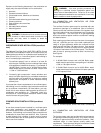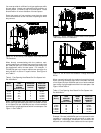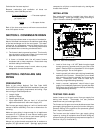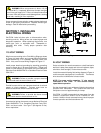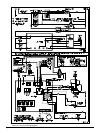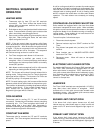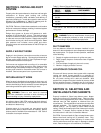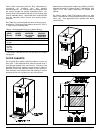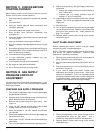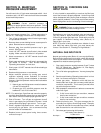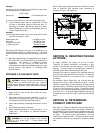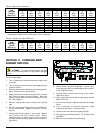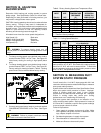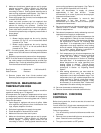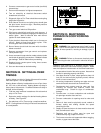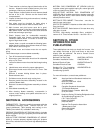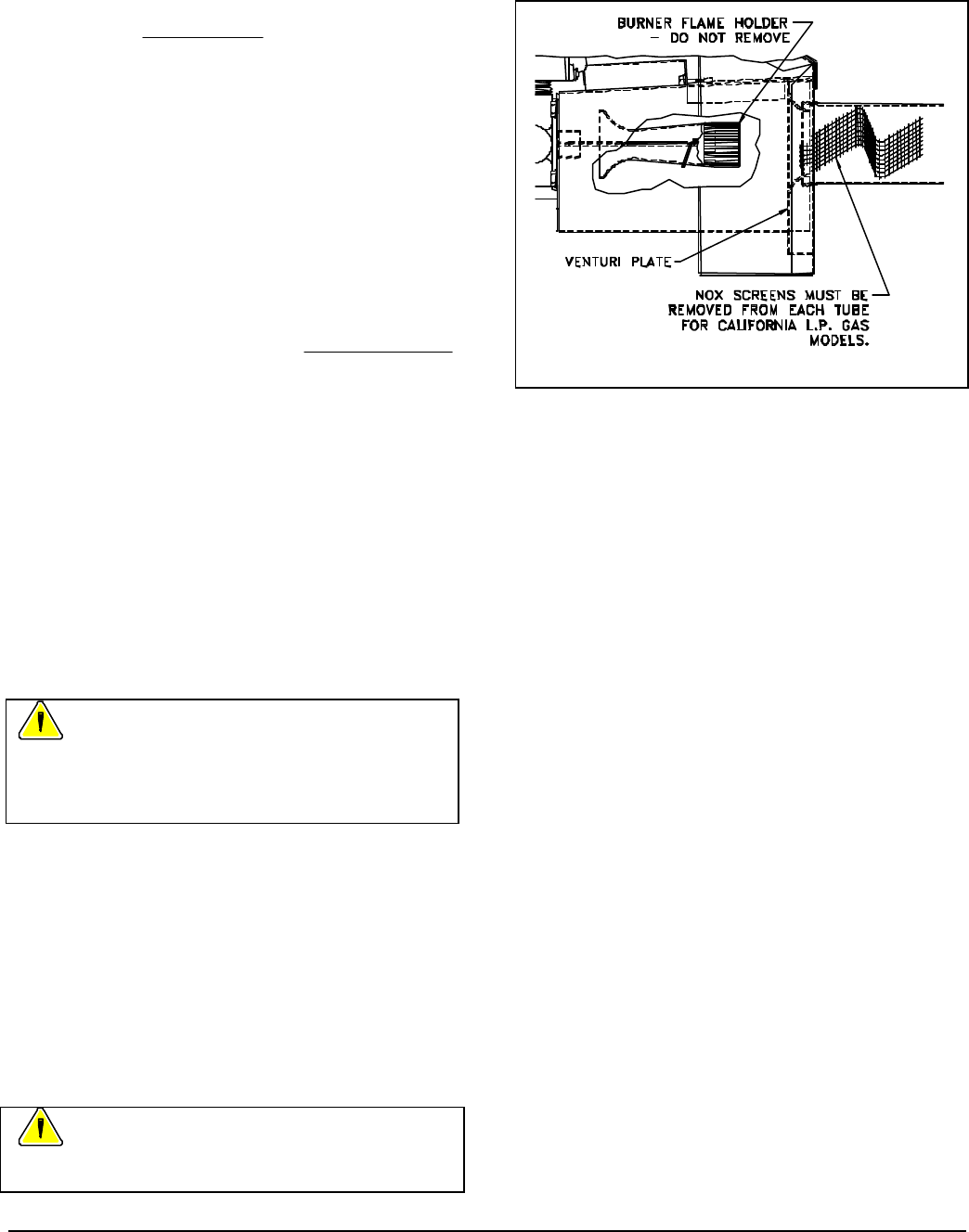
Page 22 Installer’s Information Manual
Example:
Assume it took 29 seconds for one cubic foot of gas to flow
and heating value of 1,000 Btu/cu.ft.
1,000 x 3,600
Gas Input = = 124,138 Btu per hour
29
If you left no other pilots on, this is the furnace gas input.
8. If you left water heater, dryer or range pilots on, allow
for them in calculating correct furnace gas input. A
quick way is to allow 1,000 Btu per hour for a water
heater, 500 Btu per hour for dryer and 500 Btu per hour
for each range burner pilot.
Example:
If you left gas water heater, dryer, two range burner pilots
and one oven pilot on, allow:
Water heater pilot 1,000 Btu per hour
Dryer pilot 500 Btu per hour
2 range burner pilots 1,000 Btu per hour
1 range oven pilot 500 Btu per hour
3,000 Btu per hour
Subtracting 3,000 Btu per hour from 124,138 Btu per hour
measured above equals 121,138 Btu per hour. This would
be the correct furnace gas input after allowing for pilots left
on.
9. Manifold pressure may be adjusted within the range of
3.2 inches W.C. to 3.8 inches W.C. to get rated input ±
2 percent. See Section 13, "Manifold Pressure
Adjustment." If you cannot get rated input with
manifold pressure within the allowable range, you must
change orifices. See Section 17, "Changing Main
Burner Orifices."
PROPANE (LP) GAS INPUT RATE
WARNING: Propane (LP) gas installations do not
have gas meters to double-check input rate. Measure
manifold pressure with an accurate manometer. Failure to
accurately adjust pressure could cause heat exchanger
failure.
1. Make sure you have correct pilot orifice and main
burner orifices.
2. Gas supply pressure must be between 11 and 13
inches W.C. for propane (LP) gas. See Section 12,
"Gas Supply Pressure and Pilot Adjustment."
3. Start furnace following "Operating Instructions" on front
door.
4. Let furnace warm up for 6 minutes.
5. Adjust manifold pressure to 10.0 inches W.C. ± 0.3
inches W.C. See Section 13, "Manifold Pressure
Adjustment."
WARNING: Do not set Propane (LP) manifold
pressure at 11.0 inches W.C. It could cause heat
exchanger failure.
NOTE: NOx reducing screens must be removed from each
tube of California NOx furnaces when converting to
propane (LP) gas. See Figure 20.
Figure 20. California NOx Screen Removal.
SECTION 15. DERATING FOR HIGH
ALTITUDE
At higher altitudes, the density of the air is lower.
Therefore, for proper combustion, the quantity of gas
burned in the furnace must be reduced. This is called
derating. Furnaces must be derated when installed at
altitudes greater than 2,000 feet above sea level.
Derating the furnace by adjusting the manifold pressure
lower than the range specified in the Section 13, "Manifold
Pressure Adjustment" is considered to be an improper
procedure.
At elevations above 2,000 feet, the furnace must be
derated 4% for each 1,000 foot above sea level. It is the
installer’s responsibility to see that the furnace input rate is
adjusted properly. Derating must be achieved by reducing
the size of the main burner orifices. Choose the proper
orifices for your altitude and gas heating value from orifice
size Table 7 or 8. In Canada, high-altitude models may be
available that are rated for 2,000 to 4,500 feet above sea
level.
SECTION 16. DETERMINING
CORRECT ORIFICE SIZE
See Table 7 or Table 8 to determine correct orifice size for
your gas type, gas heating value, and altitude. Natural gas
and propane (LP) gas orifice kits are available through your
supplier. Individual orifices are also available in convenient
lot sizes. To ensure proper performance, use only
manufacturer supplied orifices. To determine which orifices
are installed in furnace, see rating plate--located on blower
door.



